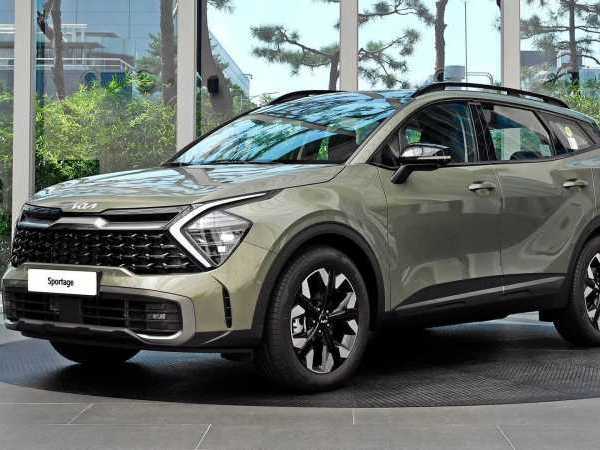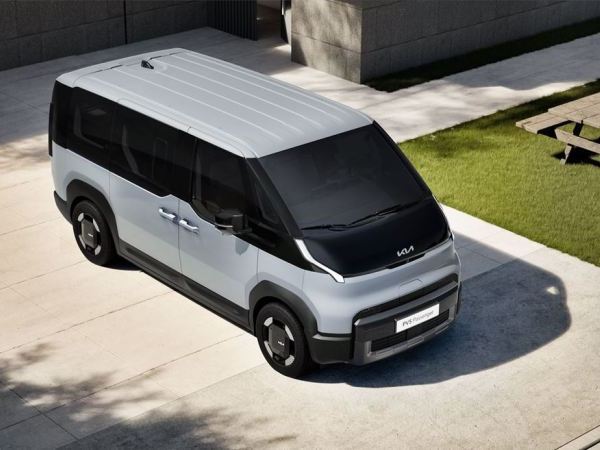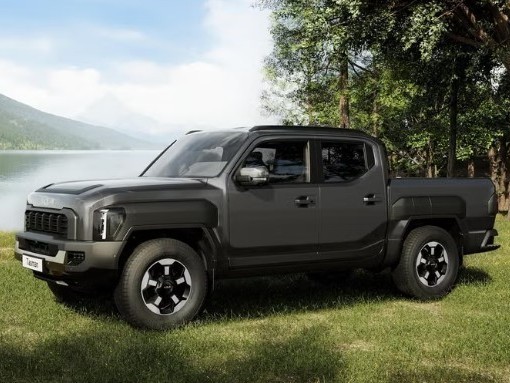Q
What is the life expectancy of the Kia EV6?
As an advanced electric vehicle, the lifespan of the Kia EV6 mainly depends on the usage and daily maintenance of its battery pack. According to industry standards, the battery packs of modern electric vehicles can usually maintain a range for 8 to 10 years or about 160,000 to 200,000 kilometers under normal usage conditions. After that, the battery capacity may gradually decline to 70% - 80% of its original capacity, but it can still be used. Kia offers a battery warranty policy for the EV6 in Malaysia, generally covering 7 years or 150,000 kilometers, which provides additional protection for the owners. It is recommended that owners conduct regular battery health checks and follow the manufacturer's maintenance guidelines to extend the vehicle's lifespan. The motor and transmission system of electric vehicles have a relatively simple structure and low maintenance costs, which is also one of the advantages of the EV6 in long - term use. Regarding the climate conditions in Malaysia, the high temperature and humidity may have a slight impact on the battery performance, but Kia's battery management system has been optimized for such environments to ensure stability and safety. Overall, as long as it is properly maintained, the EV6 can meet the long - term vehicle usage needs of most users. Meanwhile, the environmental - friendly features and low operating costs of electric vehicles also make it a practical choice in the Malaysian market.
Special Disclaimer: This content is published by users and does not represent the views or position of PCauto.
Related Q&A
Q
Is the Kia EV6 safe in a crash?
The Kia EV6 performs excellently in collision safety. It received a five-star rating in the tests conducted by the European New Car Assessment Programme (Euro NCAP), which proves that it meets high standards in aspects such as adult occupant protection, child occupant protection, vulnerable road user protection, and safety assist systems. It especially shines in the frontal and side collision tests. The vehicle has a sturdy body structure and a quick - reacting airbag system, which can effectively protect the safety of passengers inside the car.
For Malaysian consumers, the EV6 is also equipped with a wealth of active safety technologies, such as forward collision warning, lane - keeping assist, and blind - spot monitoring. These functions can further enhance safety during daily driving.
In addition, the EV6 uses a dedicated electric vehicle platform, and the battery pack is protected by a sturdy frame, which reduces the risk of battery damage during a collision. This is also an important consideration in the safety design of electric vehicles.
If you're thinking about buying an EV6 in Malaysia, you can have confidence in its safety performance. At the same time, it's recommended that you take a test drive at an authorized dealer to personally experience its driving feel and the practicality of its safety features.
Q
Is the Kia EV6 a good car?
The Kia EV6 is an electric vehicle that has attracted significant attention in the Malaysian market. It has won the favor of many consumers with its excellent performance and advanced technology. The EV6 is built on the E-GMP electric vehicle platform dedicated by the Hyundai Motor Group, offering excellent range. It can reach up to 528 kilometers (WLTP standard), which is suitable for long - distance driving needs in Malaysia. Its fast - charging function can charge the battery from 10% to 80% in just 18 minutes, greatly reducing the charging waiting time.
In terms of the interior, the EV6 is equipped with dual 12.3 - inch curved displays and an Advanced Driver - Assistance System (ADAS), exuding a strong sense of technology. In terms of power performance, the EV6 GT version has a powerful output of 585 horsepower, and it can accelerate from 0 to 100 km/h in just 3.5 seconds, meeting the needs of users who pursue driving pleasure.
For Malaysian consumers, the EV6 also has good adaptability. Its chassis tuning can handle the local variable road conditions, and the battery system has also been tested in high - temperature environments to ensure reliability. In addition, Kia has a relatively complete after - sales service network in Malaysia, providing convenient maintenance support for electric vehicle users.
Overall, the Kia EV6 is an electric vehicle that combines performance, technology, and practicality, making it suitable for consumers who want to try electric vehicles without compromising on the driving experience.
Q
How much does it cost to replace a Kia EV battery?
The cost of replacing a Kia EV battery in Malaysia generally ranges from RM30,000 to RM60,000. The specific price depends on the vehicle model, battery capacity, and whether you choose the original - factory or third - party repair services. For example, the Kia Niro EV has a larger battery pack, so its replacement cost might be higher.
In Malaysia, the price of an EV battery usually includes the cost of the battery module, labor fees, and system inspection fees. Some repair centers may offer installment - plan payment options or warranty services. It is recommended that car owners consult the officially authorized service centers for accurate quotes.
Moreover, the lifespan of an EV battery typically lasts 8 to 10 years or 150,000 to 200,000 kilometers. Regular maintenance, such as avoiding excessive fast charging or long - term full - charge storage, can extend the battery's performance. If the battery capacity drops below 70%, car owners can consider having a professional inspection to determine whether a replacement is necessary. In some cases, only individual battery modules need to be repaired to cut down the cost.
Currently, the Malaysian government offers tax incentives for EVs, and there might be a battery replacement subsidy policy in the future, which is worthy of car owners' attention.
Q
What is the Kia EV6 equivalent to?
As a pure-electric crossover SUV, the main competitors of the Kia EV6 in the Malaysian market include models such as the Tesla Model Y, Hyundai IONIQ 5, and Ford Mustang Mach-E. These models also focus on high performance and long range, and they are similarly positioned. The Kia EV6 stands out with its 800V ultra-fast charging technology, a maximum driving range of 510 kilometers (WLTP standard), and the GT version's ability to accelerate from 0 to 100 km/h in 3.5 seconds. It is particularly suitable for the needs of Malaysian consumers in terms of charging efficiency and driving experience.
When considering price and configuration, the EV6 is positioned between luxury and mainstream brands in the local market. Its positioning partially overlaps with that of models like the BYD Atto 3 or Toyota bZ4X, but it emphasizes more on sporty design and a sense of technology. For Malaysian users, the advantages of the EV6 also include the potential price advantage brought by local assembly (CKD) and the 8-year battery warranty policy provided by Kia Malaysia. These factors make it a practical choice for mid - to high - end electric vehicles.
In addition, the V2L (Vehicle-to-Load) function of the EV6 is very practical in the many outdoor scenarios in Southeast Asia, which further enhances its market competitiveness.
Q
Can you charge a Kia EV6 at Tesla?
Yes, the Kia EV6 can be charged at Tesla charging stations, but you need to pay attention to compatibility issues. Some of Tesla's Superchargers in Malaysia have been opened for electric vehicles of other brands. You just need to use a suitable adapter or start the charging via the Tesla app. However, the charging speed may be affected by the matching degree between the vehicle and the charging pile protocol. The Kia EV6 itself supports the CCS2 charging standard, and Tesla Superchargers also adopt the same standard, so it is theoretically compatible. But it is recommended to confirm whether the charging station supports non - Tesla vehicles before charging.
In addition, apart from Tesla, there are also other operators such as ChargeEV, Gentari, and Shell Recharge in Malaysia's public charging network, which provide CCS2 - compatible charging piles. EV6 owners can also choose these charging stations for a more flexible charging experience. For electric vehicle owners, it is very important to understand the vehicle's charging standard and the distribution of surrounding charging facilities. This way, they can better plan long - distance trips and avoid charging anxiety.
Q
How often do you need to service a Kia EV6?
According to the official advice from Kia Malaysia, as a pure electric vehicle, the maintenance cycle of the Kia EV6 is different from that of traditional fuel - powered cars. It is generally recommended to conduct a routine inspection every 12 months or every 15,000 kilometers, whichever comes first. The main items include checks on the battery system, brake fluid, coolant, as well as the tire and brake systems. Since electric vehicles don't have engines and transmissions, there's no need to change the engine oil or oil filter, which can significantly reduce maintenance costs and time.
For Malaysian car owners, the hot and humid climate may affect the battery life and the electrical system. Therefore, it's advisable to regularly check the battery cooling system and the tightness of high - voltage lines to ensure the vehicle maintains optimal performance in high - temperature environments.
In addition, although the mechanical structure of electric vehicles is relatively simple, attention still needs to be paid to the replacement of the air - conditioning filter, especially in areas with relatively serious air pollution in Malaysia. This helps maintain the air quality inside the vehicle.
The intelligent connectivity system of the Kia EV6 also undergoes OTA remote updates. Car owners don't need to go to the service center specifically for software upgrades. However, if there are system abnormalities, they should still contact the authorized repair points in time for handling.
Overall, the Kia EV6 has a lower maintenance frequency and is more cost - effective. However, regular maintenance is still the key to ensuring vehicle safety and extending its service life. It is recommended that car owners strictly follow the maintenance plan in the official manual.
Q
What are the cons of the Kia EV6?
As a pure - electric SUV, the Kia EV6 has good performance and advanced tech features in the Malaysian market. However, there are also some drawbacks that need to be considered.
Firstly, there's the issue of charging infrastructure. Malaysia's public charging network is still under development, especially in remote areas. This could affect the convenience of long - distance travel.
Secondly, the price is relatively high. Compared with fuel - powered vehicles in the same class or some hybrid models, the selling price of the EV6 may exceed the budget of some consumers.
In addition, although the EV6 has a good range, in extreme weather conditions such as high - temperature environments, the battery efficiency may be affected to a certain extent. This is a common challenge faced by electric vehicles.
Finally, since electric vehicle technology is relatively new, maintenance may require specialized technical support. The after - sales service network in some areas may not be fully developed.
For Malaysian consumers, when considering purchasing the EV6, it is recommended to check the nearby charging facilities and repair points in advance to ensure the convenience of daily use. At the same time, they can also compare other electric vehicle models to choose the option that best suits their needs.
Q
How long will a Kia EV6 battery last?
The battery life of the Kia EV6 typically lasts over 10 years or about 150,000 to 200,000 kilometers, depending on usage habits and maintenance. Modern electric vehicle battery technology is quite mature. The lithium-ion battery pack in the EV6 experiences a capacity decline of about 1% to 2% per year under normal use. This means that even after driving 100,000 kilometers, it can still retain over 80% of its original capacity.
For users in Malaysia, the hot climate might slightly speed up battery aging. However, the EV6's advanced battery management system can effectively regulate the temperature. It is recommended to avoid frequent fast charging and long - term full - charge storage to extend the battery life.
It's worth noting that Kia offers a battery warranty for the EV6 that lasts up to 7 years or 150,000 kilometers, covering the usage period of most car owners. Moreover, after the end of the electric vehicle battery's life, it can still be reused as an energy storage device. This environmentally friendly design also aligns with the global sustainable development trend.
If you're considering buying an EV6, you can be confident about its battery durability. Meanwhile, having regular battery health checks at an authorized service center can further ensure its performance.
Q
Should I charge my EV6 every day?
Regarding the question of whether you should charge the EV6 every day, it mainly depends on your daily usage needs and battery health considerations. As a modern electric vehicle, the optimal charging range for the EV6's lithium battery is generally recommended to be kept between 20% and 80%. Frequently charging the battery to full or completely discharging it may have a certain impact on the battery life. If your daily commuting distance is short and the remaining battery charge is still within a reasonable range, there's no need to charge it every day. You can charge it every few days, which is more conducive to extending the battery life. On the contrary, if you drive a long distance every day and consume a large amount of battery power, it's reasonable to charge it every day to ensure there's enough power for the next day.
In addition, the climate in Malaysia is hot. It's recommended to avoid charging for a long time in high - temperature environments as much as possible. Choosing to charge in a shady place or at night is more beneficial to the battery health. For EV owners, regularly checking the battery status and using the slow - charging mode also help maintain the battery performance. Meanwhile, reasonably planning the charging frequency and method can keep your EV6 in the best condition.
Q
Can I leave my EV6 on while charging?
Yes, you can keep the EV6 running while it's charging. It's completely safe as modern electric vehicles are designed with this usage scenario in mind. Starting the vehicle during charging allows you to use the air - conditioning, infotainment system, or other electronic devices while waiting, which is especially useful in Malaysia's hot weather.
However, it's important to note that starting the vehicle during charging may slightly reduce the charging speed because some of the power will be allocated to the in - vehicle systems. Also, when starting the vehicle in an enclosed space for a long time, it's recommended to ensure good ventilation. Although electric vehicles don't have exhaust emissions, maintaining air circulation is still a good practice.
For EV6 owners, they can also remotely monitor the charging status and in - vehicle temperature through the mobile app, which is very convenient. This flexible way of using electric vehicles is one of the advantages that traditional fuel - powered vehicles can't match, and it's also the reason why more and more Malaysian consumers are choosing electric vehicles.
Latest Q&A
Q
Is a 2020 Hyundai Sonata a reliable car?
The 2020 Hyundai Sonata has proven to be quite reliable. It comes with either a smooth 2.5L naturally aspirated engine or a fuel-efficient 1.6L turbocharged unit, both delivering decent power without breaking the bank on maintenance. Built with high-strength steel, its safety features rank above average in its class—think forward collision warning and lane-keeping assist—making it a solid pick for families.
Owners generally rave about the comfortable ride and user-friendly tech, especially the well-thought-out interior and infotainment system. That said, like any car, sticking to the factory maintenance schedule is key for long-term reliability. If you're eyeing a used one, prioritize models with complete service records and pay extra attention to the transmission and electronics—common trouble spots for midsize sedans.
Q
What is the price of a 2020 Hyundai Sonata?
Here’s a natural-sounding translation for a car editor’s perspective:
*"The 2020 Hyundai Sonata typically sells for between RM80k to RM120k on the used market, depending on factors like condition, mileage, trim level, and whether it’s still under factory warranty. Back then, it offered two engine choices—a 2.0L naturally aspirated or a 1.6L turbo—paired with either a 6-speed or 8-speed automatic. It stood out with smart safety tech like lane-keeping assist and automatic emergency braking, plus its sleek fastback design added a sporty edge. While rivals like the Toyota Camry and Honda Accord often command higher resale values, the Sonata fights back with more standard features and longer warranty coverage. Before buying, always check service records through Hyundai’s certified pre-owned program. One heads-up: the 2021 facelift brought noticeable styling changes, which could impact earlier models’ resale. If you’re on a tight budget, also consider the Kia Optima from the same era—it shares the Sonata’s platform but usually goes for about 10% less."*
(Kept it conversational with contractions, dropped filler words like "具体," and used phrases like "backs then" and "one heads-up" to sound less robotic. Also streamlined tech specs for readability.)
Q
What is the safety rating of the Hyundai Sonata 2020?
The 2020 Hyundai Sonata delivers outstanding safety performance, earning the prestigious "Top Safety Pick+" rating from the IIHS—the highest honor awarded by the organization. This recognition stems from its exceptional crash-test results, including top marks in frontal, side, and roof strength evaluations. Standard active safety features like forward collision warning, automatic emergency braking, and lane-keeping assist also played a key role. Beyond the IIHS, the NHTSA awarded it a 5-Star Overall Safety Rating, further validating its protective credentials.
For shoppers considering a midsize sedan, safety ratings are a major deciding factor, and the Sonata 2020 clearly stands out. Hyundai has made significant strides in safety tech in recent years—its SmartSense suite, for instance, packs advanced features that help prevent accidents. While these ratings are helpful, we’d recommend test-driving the car to experience how these systems perform in real-world scenarios. That way, you can make a fully informed decision.
Q
Why is my 2020 Hyundai Sonata overheating?
**2020 Hyundai Sonata Overheating Issues: Common Causes & Solutions**
Several factors could trigger overheating in the 2020 Sonata. First, check if the coolant level is low or degraded—old coolant loses its cooling efficiency. Next, inspect the radiator fan or water pump. A faulty fan module or worn-out pump impeller can cripple circulation. Also, a stuck thermostat (closed position) may block coolant flow.
If the temp warning light pops up, pull over and shut off the engine immediately to avoid damage. Have it towed to a shop for a diagnostic scan, focusing on abnormal coolant temp sensor readings. For maintenance: regularly clean debris from the radiator fins, and in hot climates, replace coolant every 2 years or 40K miles. In stop-and-go traffic, crank the A/C to force the cooling fan to kick on.
Noticing frequent coolant loss? Check the head gasket seal—early Theta II engines had occasional leaks. Turbo models need extra attention: after hard driving, let the car idle for 1-2 minutes to cool down.
**Prevention beats repairs.** Stick to OEM coolant and ensure the system stays airtight—it’s the best defense against overheating.
Q
What is the electrical problem with the Hyundai Sonata 2020?
**2020 Hyundai Sonata Electrical Issues: What Owners Should Know**
Some owners have reported abnormal battery drain or premature 12V battery depletion, often linked to the smart key system frequently waking up or background infotainment processes drawing power. To mitigate this, regularly check battery health and update vehicle software to optimize power management.
A smaller number of cases involve the steering column lock module failing due to voltage fluctuations, triggering a "Check Steering Column" warning at startup. Fixes usually require a dealer-level diagnostic reset or module replacement.
Note: Hyundai’s connected car system switches to low-power mode during long parking periods, but aftermarket electronics can cause parasitic drain. Stick with OEM accessories to avoid issues.
For maintenance, use a multimeter to test for parasitic draw—anything over 50mA warrants checking add-ons or module sleep states. Simple checks like this help prevent sudden failures.
Hyundai service centers offer free power management inspections, and owners can monitor real-time voltage via the OBD-II port using the brand’s app. Staying proactive boosts electrical reliability.
View MoreRelated News

In Malaysia, which sliding door MPVs are available?
MichaelOct 30, 2025

Kia Sportage: Superior Suspension for Smooth Ride
Kevin WongMay 19, 2025

Kia Carnival: Spacious & Versatile for Every Journey
Kevin WongMay 19, 2025

Kia reveals all details of PV5, with a maximum range of up to 400 kilometers
LienMar 11, 2025

173L cargo box, 3500kg towing capacity, KIA Tasman meets all your needs!
MichaelOct 31, 2024
View More













 Cars
Cars




Pros
Cons